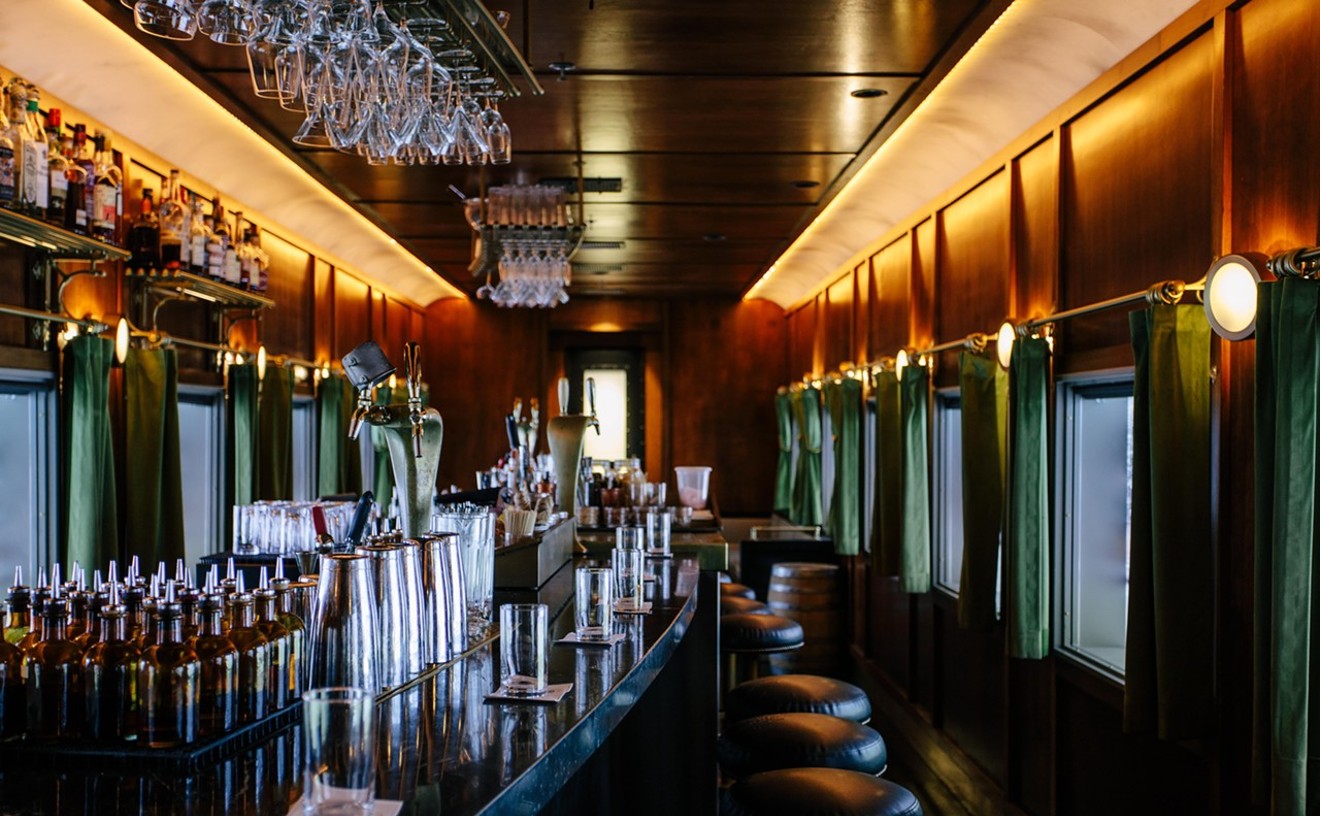If my nose starts to run by the third bite, I know that I'm eating real Thai food. Spicy hot, tangy, pungent, sour and aromatic are the characteristic flavors of Thai cuisine. There's a good chance that the kitchen is cooking something less than authentic if you have to ask for a dish to be spiced up.
One of my pet peeves is ethnic food that is toned down in an attempt to second-guess uninitiated palates. Those palates often belong to the people eating with chopsticks in a Thai restaurant. In Thailand, forks and knives are the norm. Asia is a large continent with myriad cuisines and customs.
Thankfully, our taste buds have discovered the joys of diversity. Ethnic markets attract chefs and curious novice cooks. We perk up our comfort foods with ethnic accents. Even the fast-food market is dominated by ethnic influences -- such as pizza and tacos.
Why, then, do so many ethnic restaurants seem to cook for the land of the blah and the home of the bland?
Royal Barge has all the elements to cook up first-rate Thai cuisine. Authentic quality ingredients, a pleasant environment and a friendly, knowledgeable staff usually add up to something more than average.
Once seated, you'll notice an eclectic collection of Thai embroidered wall hangings, glass barges and Asian antiquities. It's a combination that's a bit amusing.
My favorite objet d'art is a framed picture of the king and queen of Thailand. A multicolor plastic garland spans the length of the picture, like a velvet rope separating the royals and us common folk. You can't miss it. He's dressed in a uniform and big sunglasses, kind of a cross between Elvis and an admiral. She's in a Thai dress, and her extended hands are full of jewels, as if to indicate benevolence.
In some ways, this picture is a metaphor for the Royal Barge experience. Thailand beckons, but Western influences muddle the effect. The staging is somehow mediocre.
Actually, a meal at Royal Barge is better than mediocre -- if you know enough to order your food in the medium-hot range. Otherwise, you'll be eating something less than Thai.
An asterisk denotes the spicy dishes at Royal Barge. I was surprised that the server asked if we wanted these dishes spicy. Why else would I order a spicy dish?
My favorite item on the menu is the chicken coconut soup. It's infused with the flavors that make Thai food special, and I ordered it on two separate visits.
The coconut refers to coconut milk, a common ingredient in Thai cuisine. It's rich without being heavy and adds delicate, sweet undertones.
Lime leaves, lemongrass, chiles and ginger round out the spectrum of flavors in this wonderful soup. Note: The lime leaves, ginger and lemongrass are for flavor and looks. Don't eat them.
Mushrooms and chunks of white-meat chicken generously dot the brothy liquid. On one occasion, the chicken was a bit overcooked, but otherwise this soup is a standout.
Another excellent way to start your meal is with the fresh soft rolls. Steamed shrimp, tender pork and rice noodles are wrapped in delicate, see-through rice paper with mint, basil and lettuce. There's no doubt the soft rolls are made to order, because the greens are crisp and chilled, while the meat and noodles are warm. This is a pleasing, cool-warm yin-yang.
The peanut hoisin dipping sauce adds a salty, sweet nuance to the fresh roll. (Peanuts are an important ingredient in Thai cooking.) If the overly thick sauce had been thinned with a little rice vinegar, fish sauce, or even simple syrup, the consistency would have been just right.
It will take more than a little tweak to turn the steamed combo into a winner. It's a combination of four appetizers, only one of which is worth a second bite. The shumai (delicate stuffed dumplings) fill your mouth with tender minced chicken, crunchy bits of vegetables and a gentle tang of salt.
As far as I could tell, the little dab of overcooked meat in the pot stickers was the same filling as in the shumai. Press this filling around a shrimp, overcook it a little and you get a shrimp paddle. Wrap it around a chicken wing and you get a crown stick. To me, a combo means different foods, not one food shaped four different ways.
There are times when it's okay for a restaurant to use the same preparation in multiple recipes. For example, the same sauce might go well with chicken, pork and seafood. Royal Barge uses its curries in this fashion.
The red curry is particularly good. It's made with red chile paste and coconut milk. I had it with beef, and on another occasion with seafood.
When I ordered the red curried beef, a menu item with an asterisk, I did not specify how hot I wanted it. The beef was sliced thin, fork-tender and cooked to perfection. The bamboo shoots added a pleasant crunch. Unfortunately, the red curry, although tasty, was mild enough for someone on an ulcer diet.
On my next visit, I had the royal curried seafood. This time I asked for medium-hot. My tongue sizzled and my nose started to run. Yes, yes, yes. The shrimp and oysters were perfect. Too bad the squid was rubbery. It was way overcooked.
My spicy chicken was overcooked, too. Instead of tender and juicy, the meat had just reached that point where it starts to get a bit dry and stringy. It came medium-hot, with fancy-cut vegetables and the baby corn common in Thai cuisine.
Even I don't want every dish spiced to death. A few mild dishes round out a good Thai meal. Noodles absorb the flavors of their sauce, and, although not palate cleansers, do a nice job of bringing a little mellow to your meal.
Silver noodles is a relatively light dish. The cellophane noodles used in the dish are made with starch from green mung beans, rather than heavier wheat or rice flour. Royal Barge mixes them with egg, pork and mixed fresh veggies. The sauce is a light blend of garlic, shallot and a splash of fish sauce.
Nam Pla is the Thai name for fish sauce. It's used in Thai cooking the way soy sauce is used in Chinese cooking. Royal Barge's menu contains reasonably complete descriptions of the ingredients in each dish, but fish sauce is never mentioned. I suspect that Royal Barge is afraid that "fish sauce" will scare away its more timid diners.
If you order spicy, consider ordering a Thai Singha beer to wash it all down. Cold, crisp, with a hint of a bitter finish, it doesn't compete with the food. Beverages with higher alcohol content, such as wine or hard liquor, don't go as well with hot food because the alcohol intensifies the food's heat.
The biggest and most pleasant surprise at Royal Barge is dessert. I tend to think of Thai restaurants as places with only two options, coconut ice cream or rice pudding with fruit -- usually mango.
I like coconut ice cream, but it's usually not anything special. Royal Barge adds a mix of tropical fruit, including jackfruit, to the ice cream. The bits of sweet and tangy fruit add depth to a typically one-dimensional dessert. It's topped with toasted coconut and called a royal sundae.
Fried bananas served with syrup is a popular dessert throughout Thailand. Royal Barge calls its version of this dish Bananas 911. I was skeptical. I expected something oily and sort of blah. I was wrong. Your server will flame the perfectly fried, crunchy battered bananas at your table, and douse the flame with maple syrup. The maple syrup isn't traditional, but it works.
If you like crème brûlée, the Thai custard will become a favorite. The top is a layer of puréed rice that's creamy smooth and caramel-flavored. The bottom is dense, rich caramel custard. I could eat two.
This is the Southwest. Bold flavors are nothing new. A few chile peppers or a little fish sauce shouldn't stand between a good authentic recipe and commercial success. If someone wants mild food, let the kitchen tone things down. Cooking for the least spice-tolerant is just another way of pandering to the lowest common denominator. When it comes to taste, the words "lowest" and "common" have no place at the table.










